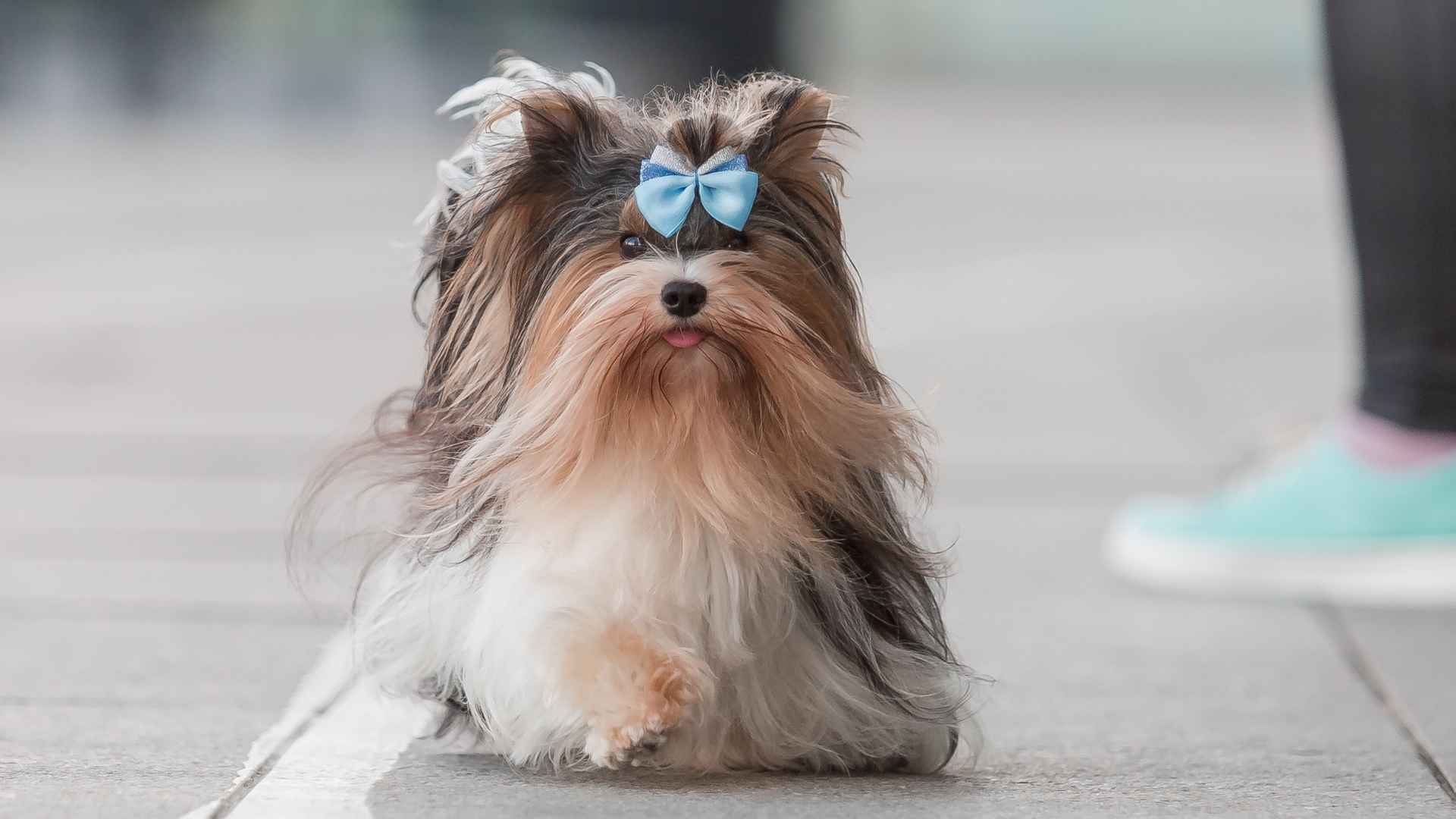All dogs have eyelashes, but not all lashes are created equal. While some breeds sport barely visible fringes, other dogs are graced with long, dramatic lashes that could rival those of a runway model. These standout lashes not only enhance a dog’s expression but also serve a practical purpose, protecting their eyes from dust, debris, and irritation. But what causes this variation, and why do certain breeds seem to flaunt nature’s version of mascara?
The answer often lies in selective breeding. Over generations, dogs were bred not only for their skills or size but also for distinct physical features. Long eyelashes are commonly seen in breeds with longer facial hair or double coats, where the lashes help prevent fur from irritating the eyes. In these cases, their function is as essential as their beauty.
In this article, we’ll explore the dog breeds with the longest, most luxurious eyelashes. Whether you’re drawn to aesthetics or simply curious about canine genetics, these breeds are sure to catch your eye.
Dog Breeds with the Longest Eyelashes
1. Cocker Spaniel
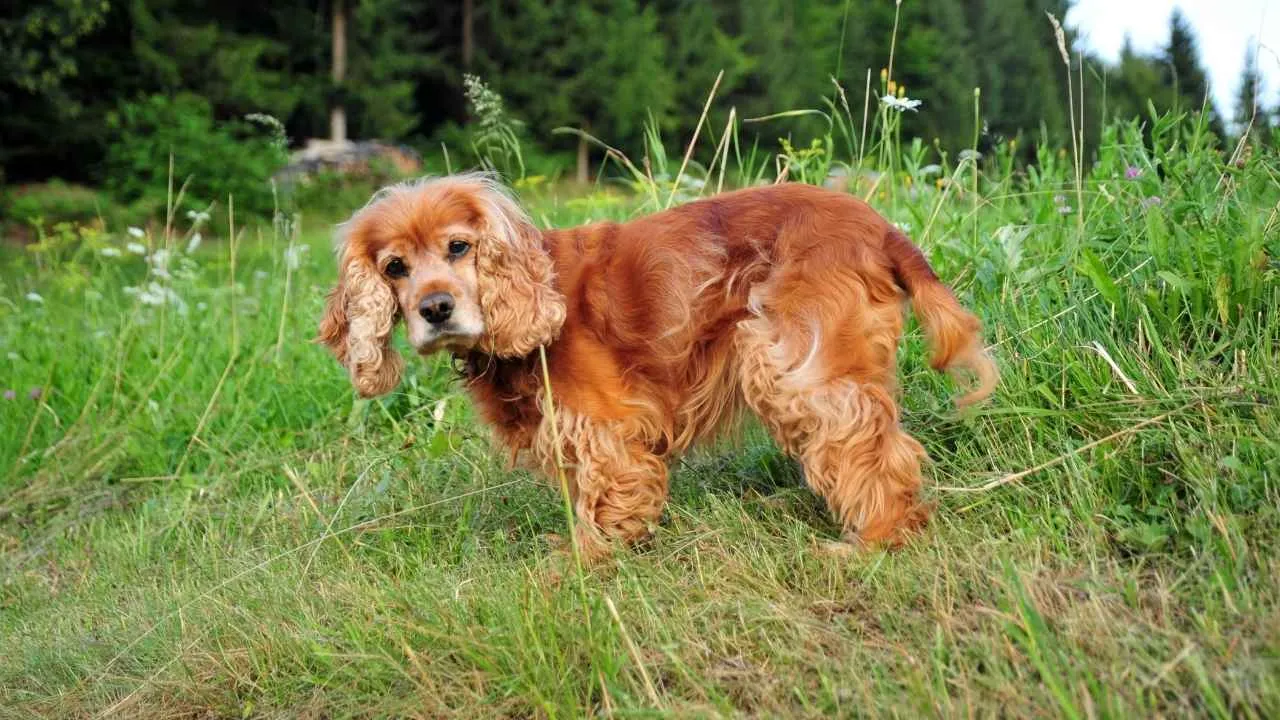
Cocker Spaniels are known for their soulful eyes framed by long, fluttering eyelashes that often draw admiration from dog lovers and groomers alike. Their lashes complement their soft, feathery coat and expressive face, making them one of the most photogenic breeds around.
In fact, some Cocker Spaniels have even gone viral on social media purely for their luxurious lashes. However, beneath the beauty lies a potential risk; those same long lashes can contribute to certain eye conditions.
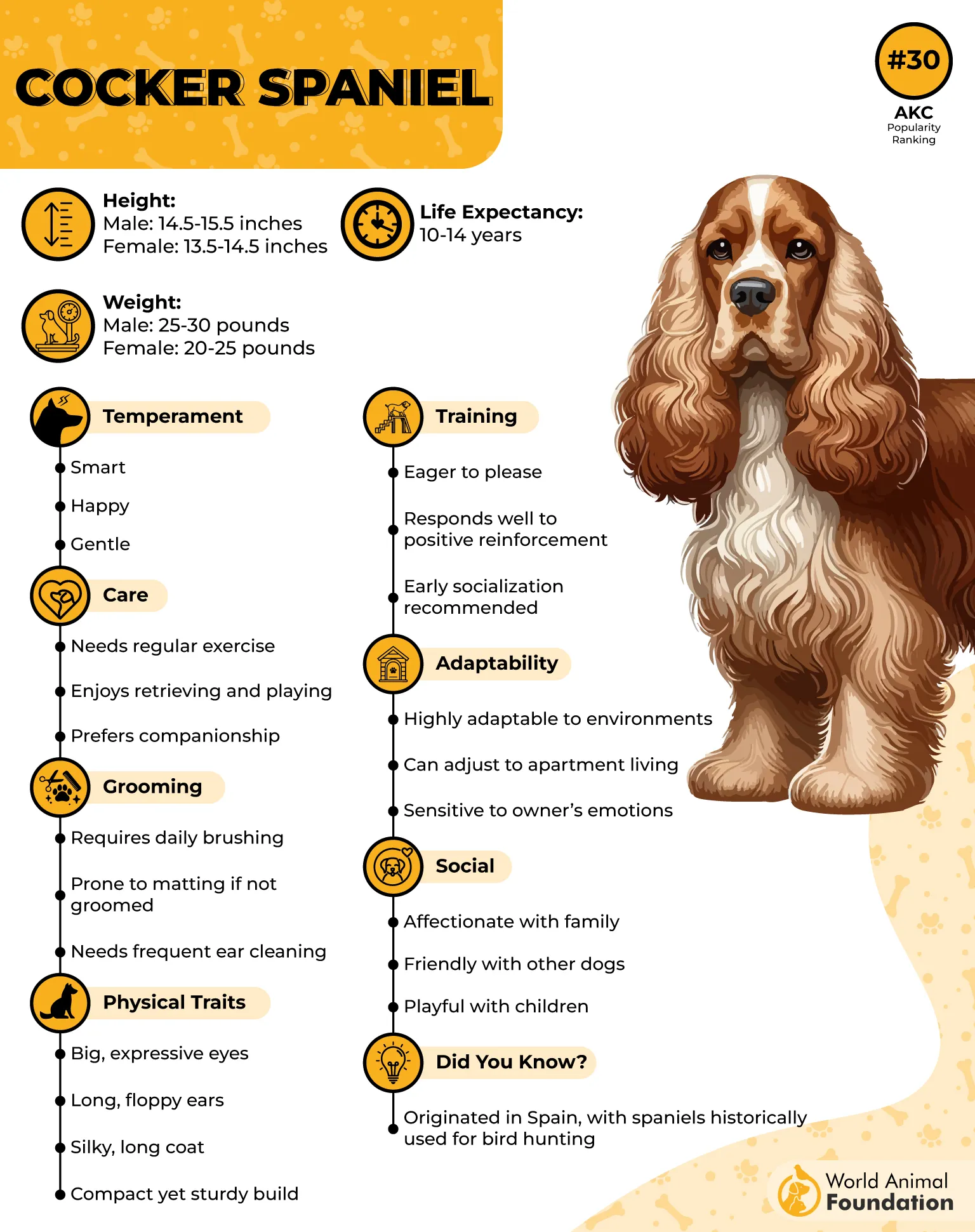
Health
While long eyelashes are charming, Cocker Spaniels are prone to a condition called distichiasis, in which abnormal lashes grow from the Meibomian glands near the eyelids.
These misplaced lashes can irritate the eye’s surface, causing anything from mild discomfort to more serious issues like corneal ulcers or infections. The condition often appears early in life and tends to persist without treatment.
Regular eye exams and gentle grooming can help manage the condition, and in some cases, trimming or removal may be necessary. Responsible breeding practices are also essential in reducing the prevalence of this genetic issue.
Fun Fact: A survey found that around 37% of English Cocker Spaniels suffer from distichiasis, making it one of the breed’s most common inherited conditions.
2. Old English Sheepdog
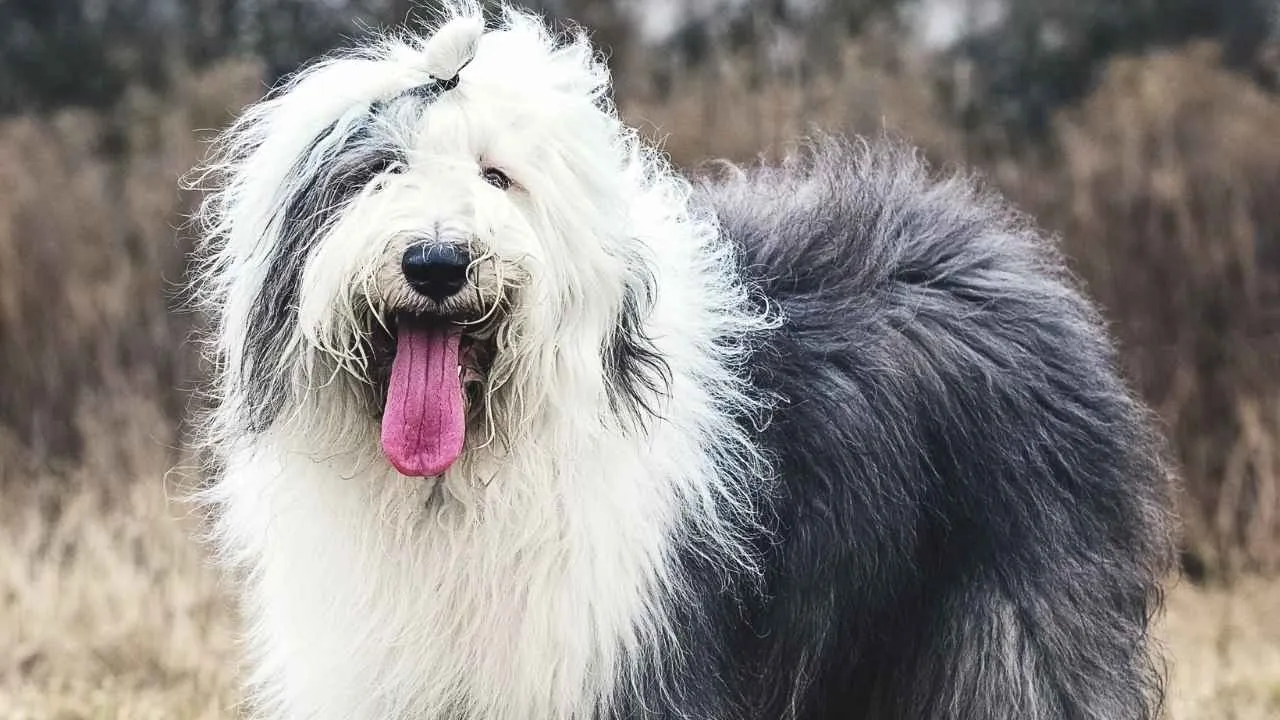
The Old English Sheepdog is instantly recognizable for its iconic shaggy coat and endearing “peek-a-boo” fringe that often hides its expressive eyes.
Beneath all that hair lie some of the longest and most elegant eyelashes in the dog world, natural tools that help keep fur away from their eyes and add to their signature charm. According to the AKC, the Old English Sheepdog is intelligent, kind-natured, and versatile.
These long lashes not only protect their eyes from irritation caused by their thick double coat but also contribute to their whimsical and lovable look.
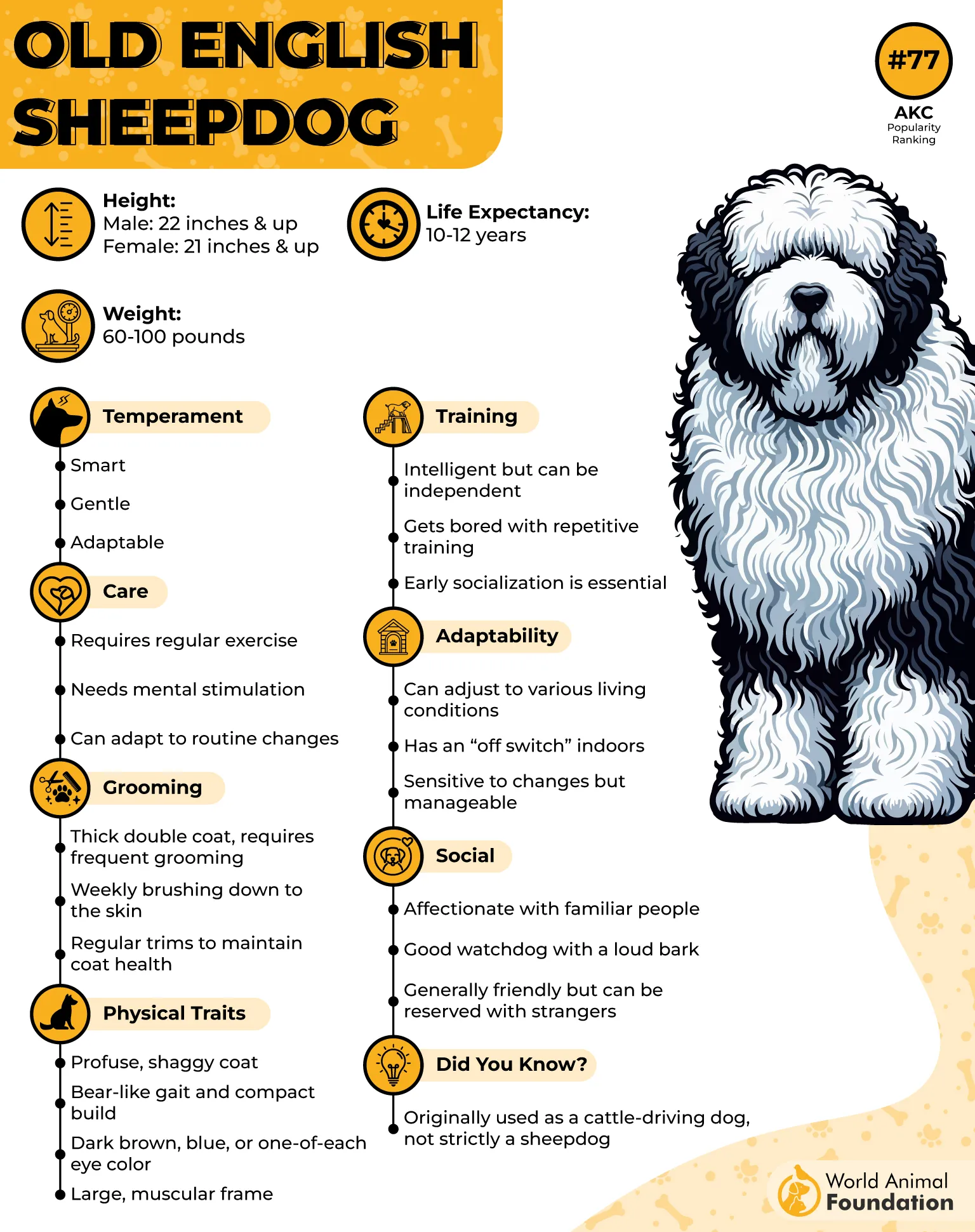
Health
While their luxurious lashes serve a purpose, Old English Sheepdogs are genetically predisposed to a condition called entropion. This disorder causes the eyelids to roll inward, forcing the eyelashes to rub against the cornea, leading to discomfort, irritation, and even potential blindness if untreated.
Regular grooming and eye checks are crucial for this breed to catch signs of entropion early. When identified in time, surgical correction typically resolves the issue and restores comfort.
Fun Fact: The Old English Sheepdog’s breed standard describes their skull as “capacious and rather squarely formed,” offering plenty of space for the intelligence they’re known for.
3. Lhasa Apso
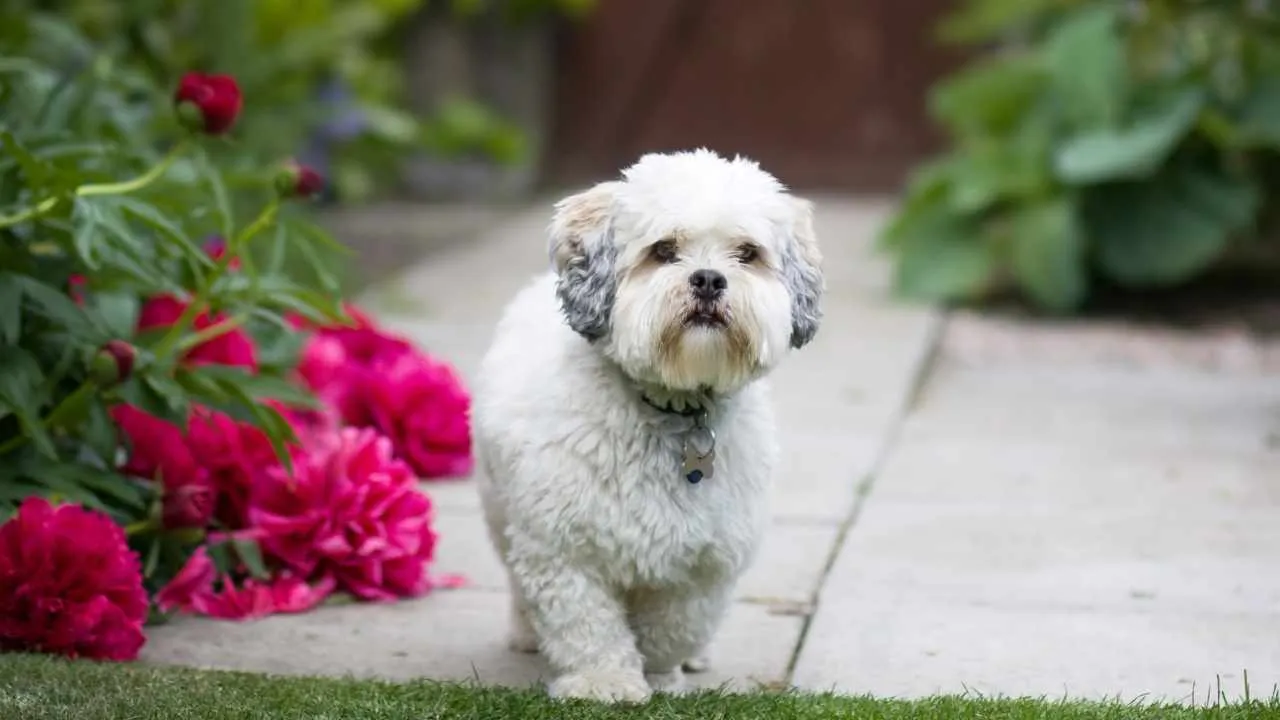
The Lhasa Apso is instantly recognizable for its lavish, floor-length coat and refined, almost regal appearance. Britannica notes that the Lhasa is a mild-mannered breed, well-suited as a loyal companion and lap dog for individuals of any age.
These lashes serve a practical purpose: they help keep the hair draping over the eyes at bay, allowing the dog to see while maintaining its distinctive look.
Originally bred as sentinel dogs in Tibetan monasteries, their dense coat and facial hair, including those dramatic lashes, were ideal for the cold, high-altitude climate.
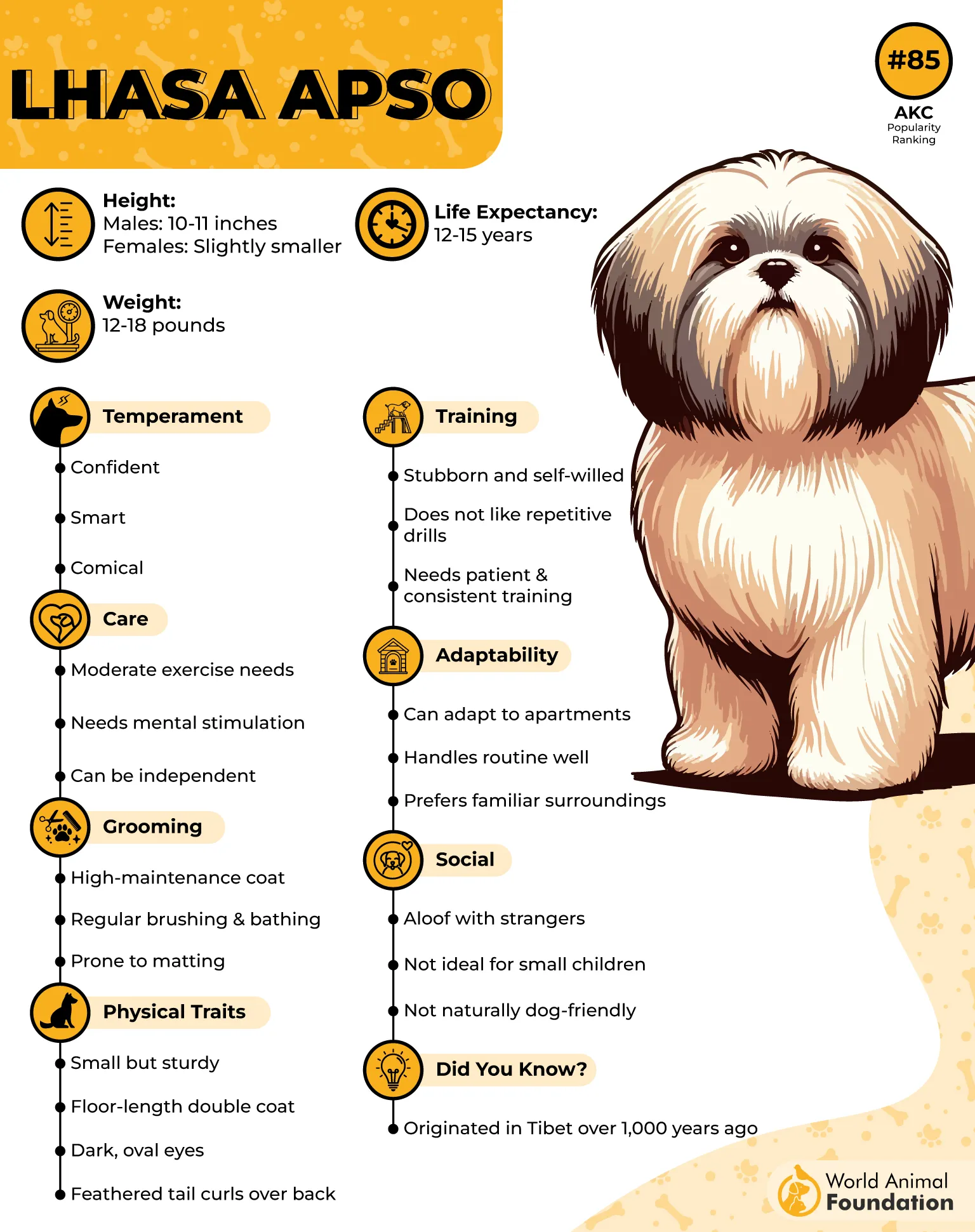
Health
Maintaining the Lhasa Apso’s coat, including its facial hair and lashes, is vital to avoiding eye irritation. Hair growing around the eyes must be trimmed regularly or tied back to prevent discomfort or vision issues.
While their long lashes help shield the eyes from debris, trapped moisture or hair can still lead to infections if grooming is neglected.
Weekly baths and frequent brushing are essential for preventing matting and maintaining a healthy coat and skin. Owners should also monitor tear staining and clean the area around the eyes as needed.
Fun Fact: In Tibetan folklore, the Lhasa Apso is believed to embody the Snow Lion, a mythical guardian and symbol of protection.
4. Shih Tzu
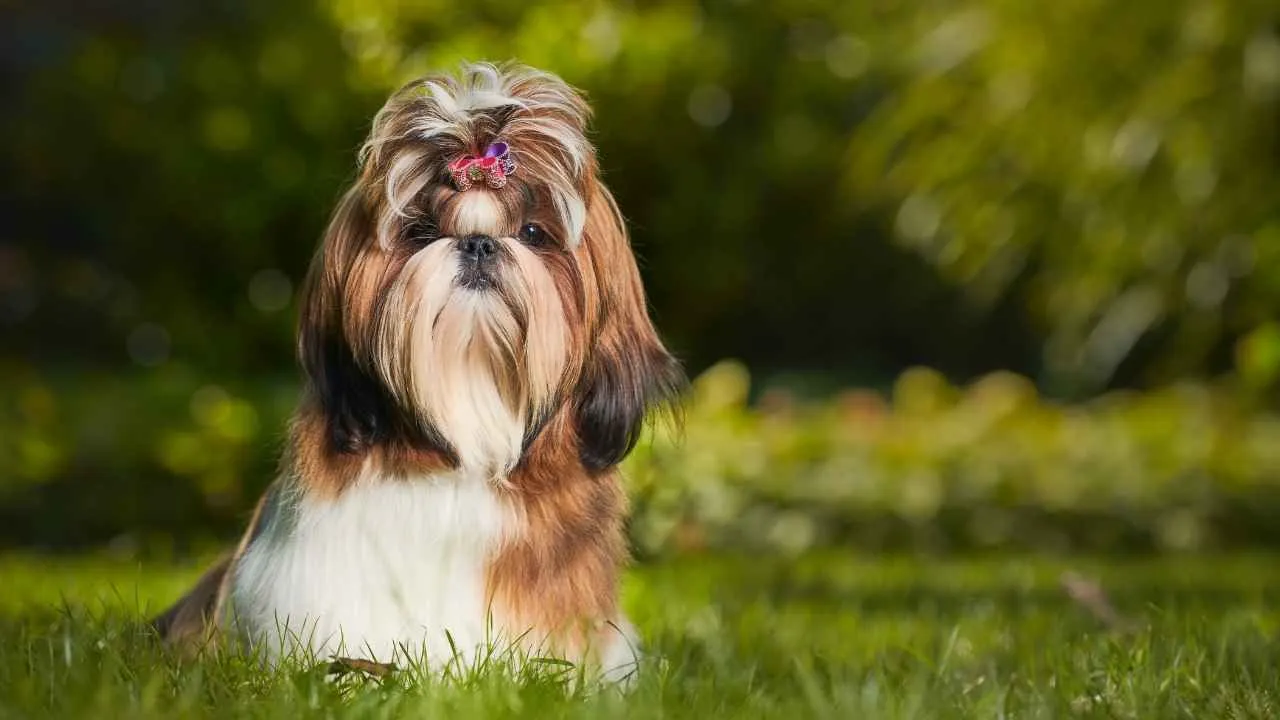
The Shih Tzu is a breed that exudes elegance, and its long, luxurious eyelashes are a key part of that charm. These thick, sweeping lashes frame their expressive, round eyes and accentuate the breed’s signature sweet and alert expression. Purina describes the Shih Tzu as a loving, lively, and smart companion.
Often paired with their flowing double coat and regal demeanor, Shih Tzus’ prominent lashes not only enhance their cuteness but also serve a practical function by shielding their eyes from dust and debris. It’s no surprise this breed is admired not only for its personality but also for its refined appearance.
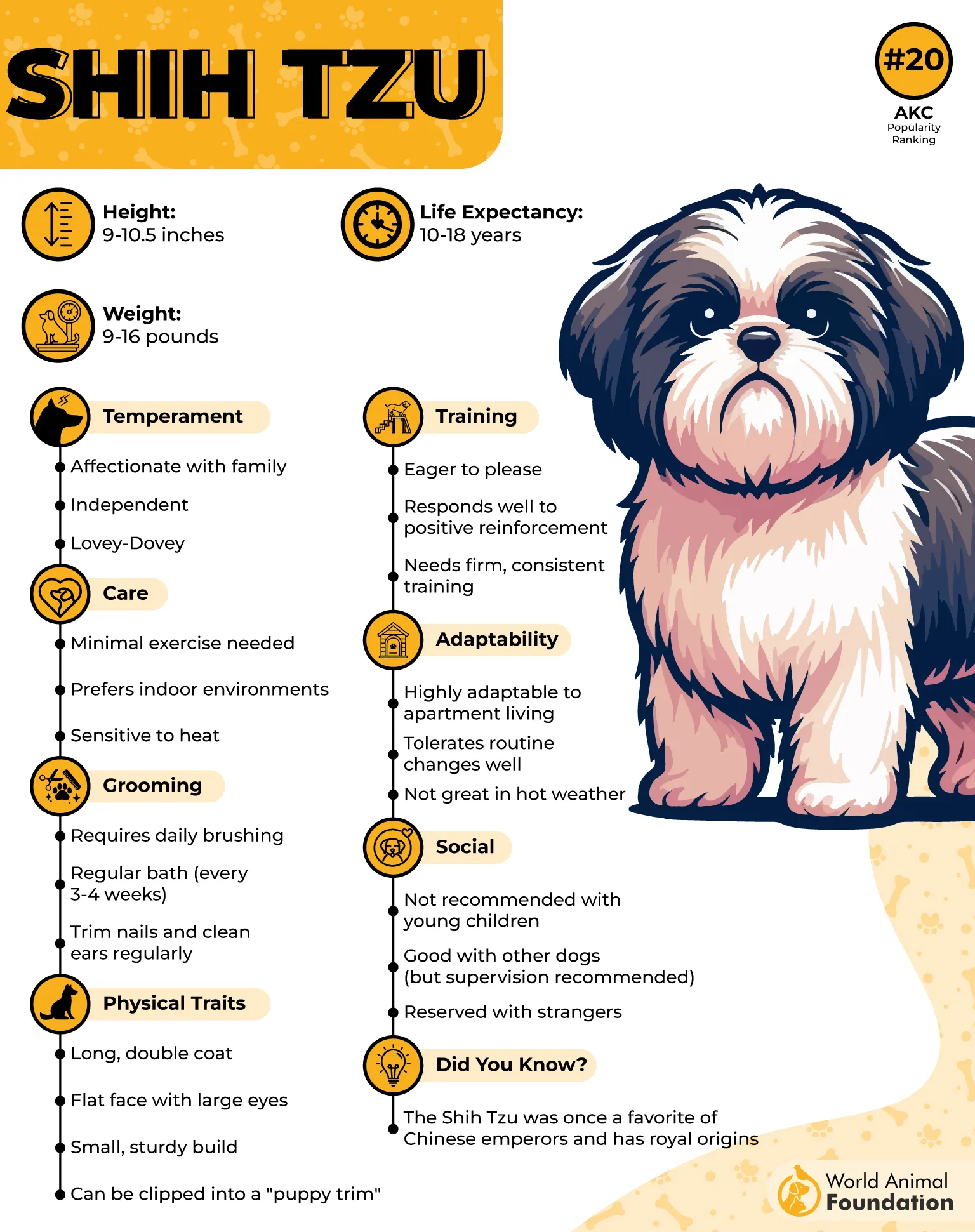
Health
Though their eyelashes are naturally beautiful, Shih Tzus require attentive grooming to keep their eye area healthy. Tear staining is a common concern, where tear overflow discolors the fur around the eyes and lashes. Additionally, their lashes can sometimes become tangled or matted if neglected, causing irritation or discomfort.
Regular cleaning and gentle brushing around the eyes can help prevent these issues. Maintaining lash hygiene isn’t just cosmetic; it plays a key role in keeping your Shih Tzu comfortable and healthy.
Fun Fact: Shih Tzus are known for their silky double coats and long eyelashes, giving them a royal appearance that demands regular grooming and care.
5. Maltese
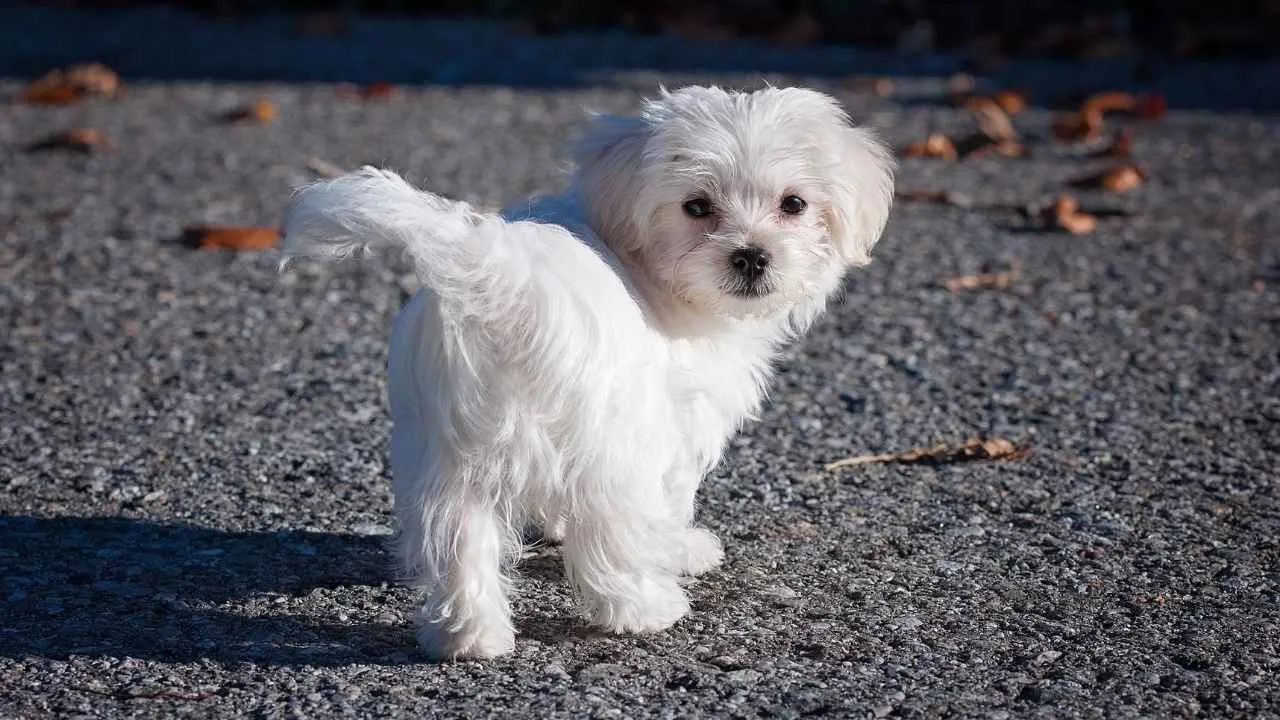
These toy-sized companions are not only prized for their elegant appearance but also for their affectionate and lively temperament. Hills Pet mentions that the Maltese has long been cherished by society, with one historical account noting a Maltese sold in the 1500s for what would be around $2,000 today.

Their signature look includes a luxurious coat that often grows long around the face, framing their eyes and allowing their thick lashes to shine. This breed’s dainty features and standout lashes often make them a favorite in grooming competitions and social media alike.
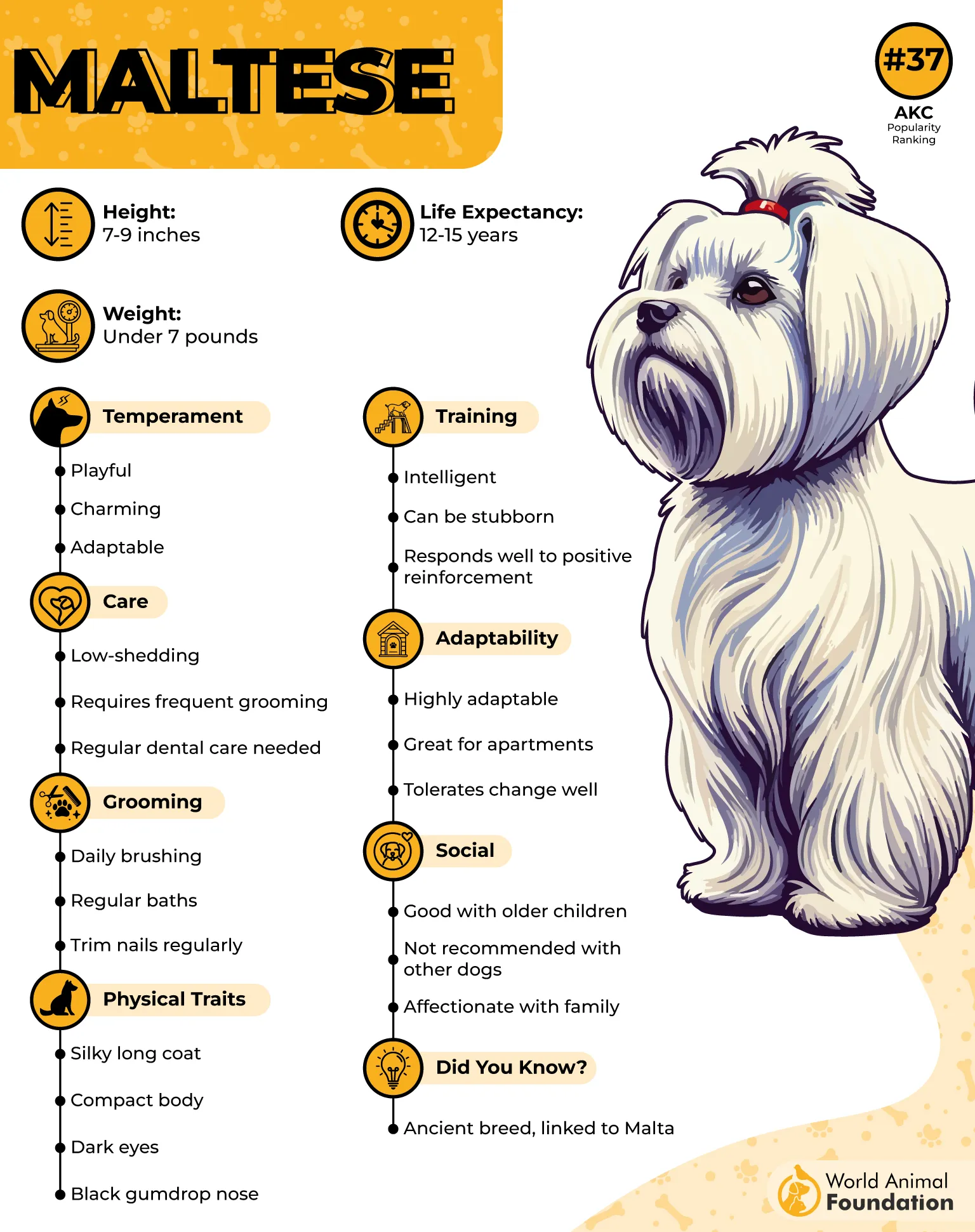
Health
Despite their stunning appearance, Maltese dogs can experience a condition where eyelashes grow in abnormal locations, sometimes affecting one or both eyes. These misdirected lashes can be soft enough to go unnoticed or, in more severe cases, may cause irritation.
Routine grooming and veterinary checkups help monitor any signs of discomfort or eye problems. Additionally, Maltese are prone to tear staining, so cleaning around the eyes and maintaining lash hygiene is especially important for this breed.
Fun Fact: While Maltese dogs are petite and regal in appearance, their lineage traces back to ancient royalty, and they boast an average lifespan of 14 to 15 years.
6. Yorkshire Terrier
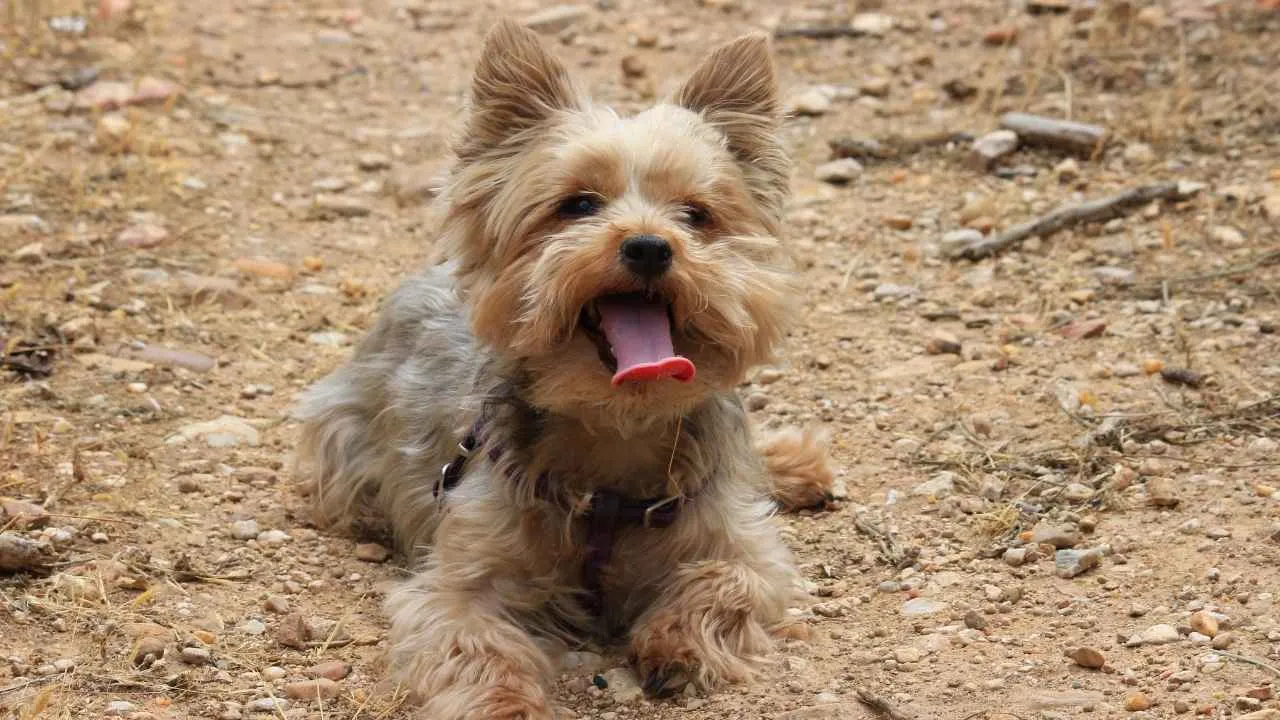
They have glamorous, floor-length coats and expressive faces. PetMD notes that although Yorkies are small in size, they have a bold personality and often see themselves as much bigger dogs, which can lead to frequent barking.
These dainty dogs, affectionately known as Yorkies, naturally grow long facial hair, including lashes, that may curl delicately around their big, alert eyes.
Their silky coat requires regular grooming, and those luscious lashes are no exception, as they can sometimes interfere with vision or eye health if left unmanaged.
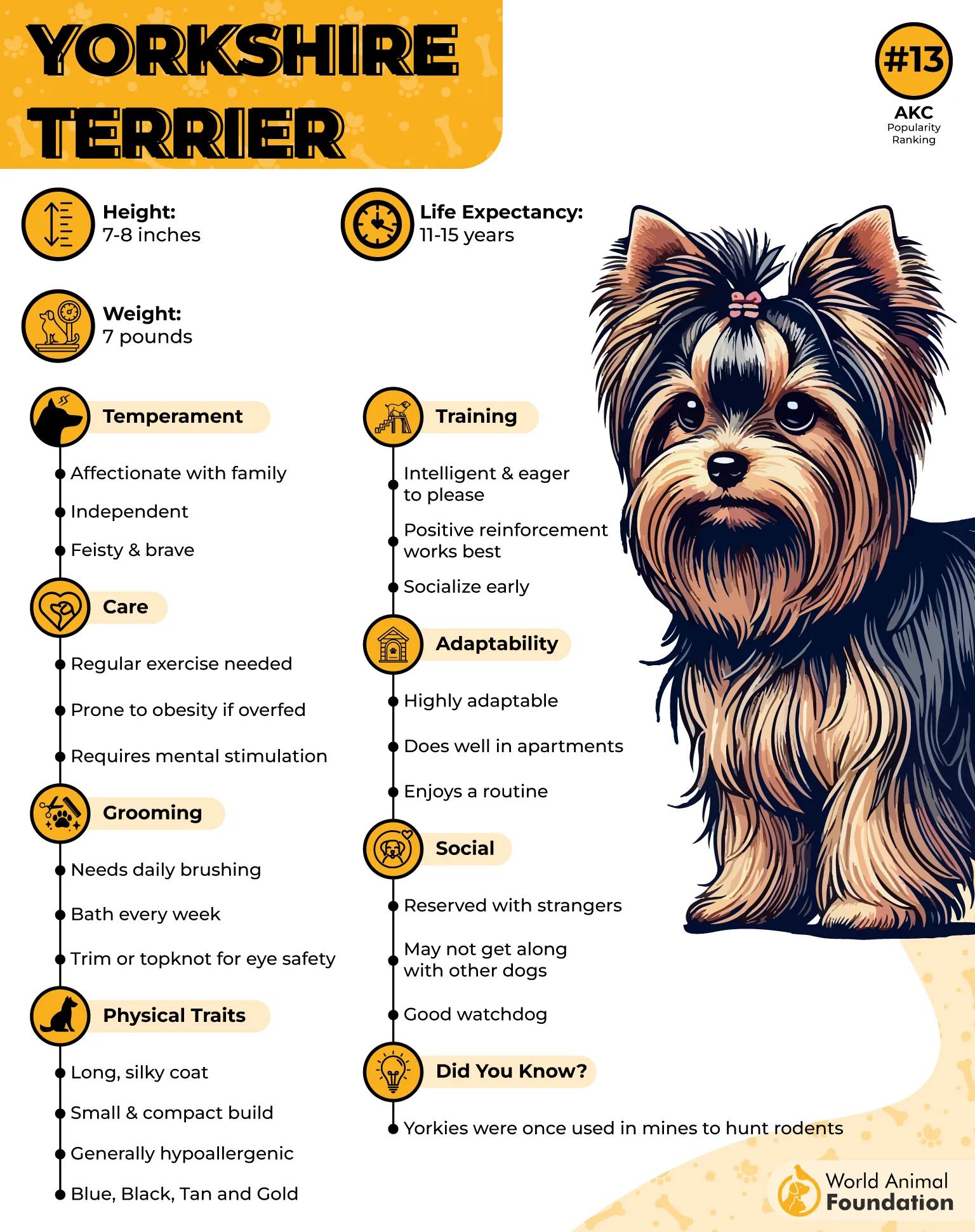
Health
While Yorkshire Terriers are generally healthy and can live 11 to 15 years, they are predisposed to a condition called distichiasis, where extra or abnormally placed eyelashes grow from the Meibomian glands along the eyelid margins.
These lashes may rub against the cornea, leading to discomfort, irritation, or even more severe problems like ulcers or infections if untreated.
Distichiasis often appears early in life and tends to persist. Because there is no genetic test for it, diagnosis relies on careful veterinary examination, sometimes requiring magnification tools. Regular checkups and proactive grooming can help minimize risk.
Fun Fact: Despite their small size and delicate looks, Yorkies are bold and spirited, yet genetically prone to distichiasis, one of the most common eyelash-related eye conditions in dogs.
7. Poodle
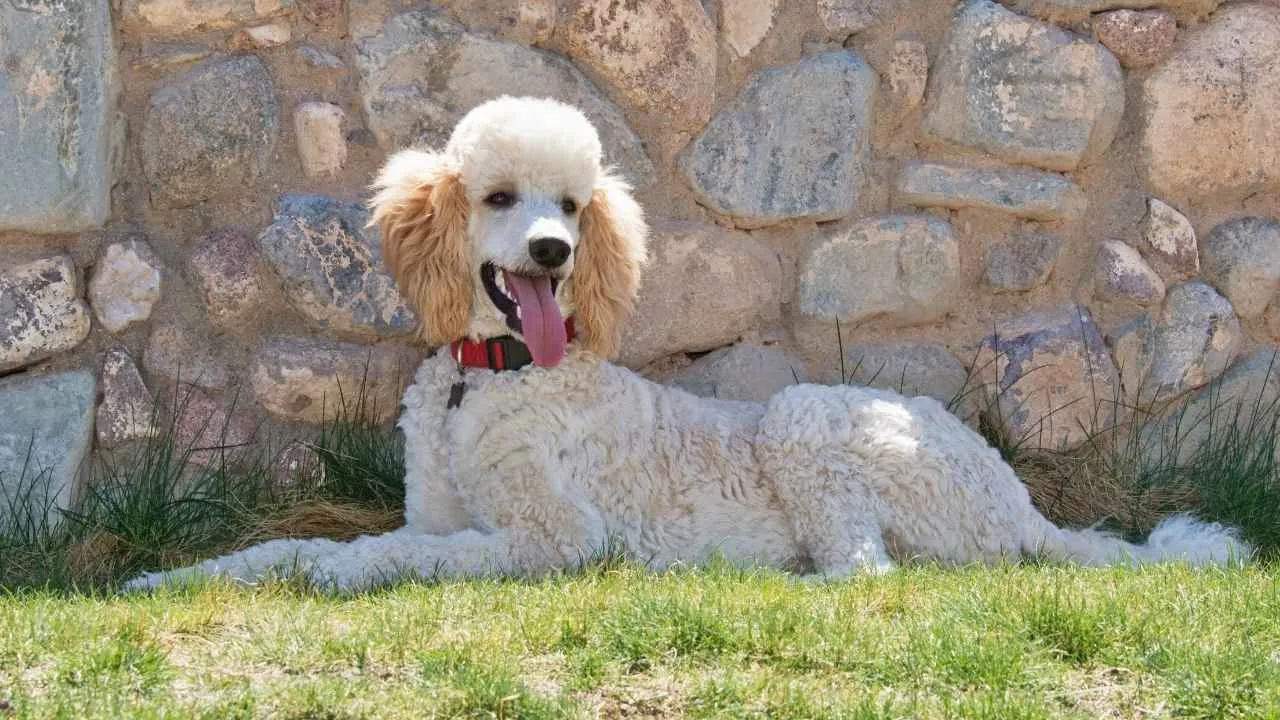
With their poised elegance and distinctively curly coat, Poodles are instantly recognizable. These luxurious lashes aren’t just for show; they serve an important protective function, shielding the eyes from dirt, dust, and moisture.
Poodles of all sizes, Standard, Miniature, and Toy, share this striking feature, making them one of the standout breeds when it comes to eyelash length and definition.
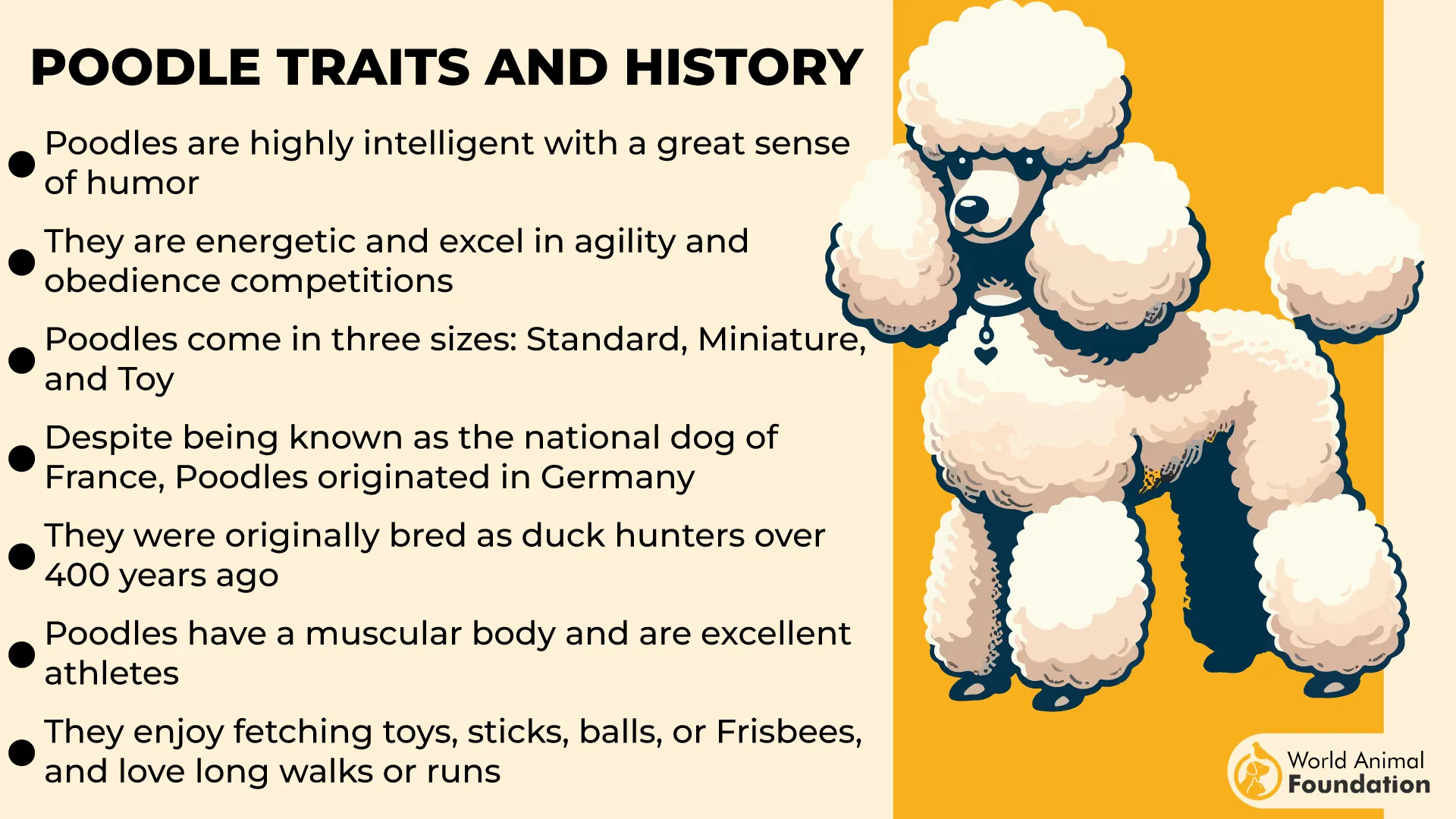
Health
Poodle’s visible eyelashes play a vital role in maintaining ocular health. Their length and curl help reduce tear evaporation, keeping the eyes moist and comfortable.
Trimming these lashes isn’t typically recommended, as doing so may increase the risk of eye irritation, infection, or even corneal ulcers. Instead, regular grooming around the face should be approached carefully, ideally with the help of a professional groomer.
Like many purebreds, Poodles can also be prone to hereditary conditions such as hip dysplasia and progressive retinal atrophy (PRA), so routine checkups are essential.
Fun Fact: Poodles’ naturally long, curled eyelashes not only protect their eyes but are also considered a key feature of their iconic and elegant look.
Conclusion
Long, fluttery lashes don’t just add charm to a dog’s face; they also serve a purpose. From the expressive puppy dog eyes of a Cocker Spaniel to the captivating stare of an Australian Shepherd, certain breeds are naturally gifted with prominent upper eyelids and lengthy eyelashes. These lashes help protect the dog’s eyes from dust, debris, and irritation, enhancing both function and beauty. While all dog eyelashes grow to some extent, some breeds clearly stand out for their dramatic fringe.
Whether it’s a viral photo or a breed like the Australian Labradoodle turning heads at the park, these lashes have even caught the attention of record keepers. While long lashes might not improve a dog’s vision, they certainly elevate their appearance, and sometimes, even earn them the current world record spotlight.


